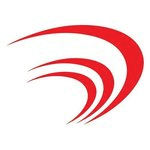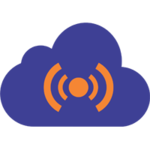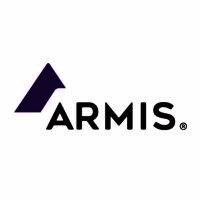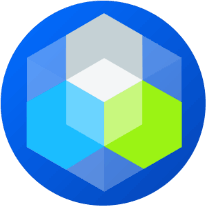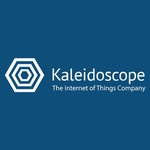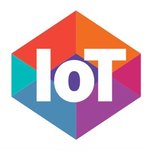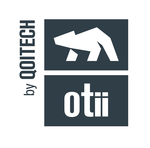What Is IoT Software?
IoT (Internet of Things) software is a type of specialized digital system that allows several devices and equipment to connect, communicate, and be managed across a network. This software is critical to providing IoT functionality, which enables for the gathering, analysis, and exploitation of real-time data from connected devices.
At its core, IoT software serves as a link between physical objects and the digital world, enabling smooth integration and synchronization between them. This software often has a variety of components, including communication protocols, data management tools, cloud services, and user interfaces. One of the primary characteristics of IoT software is the ability to remotely monitor and control linked devices, making it a valuable tool for both enterprises and people.
It also has advanced automation features, which enable the creation and execution of pre-defined actions and workflows based on real-time data. Another critical aspect of IoT software is its security features. With a rising number of connected devices, maintaining data privacy and protecting against cyber threats has become a major challenge.
As a result, IoT software has strong security features to protect sensitive data and prevent unwanted access to connected devices. When purchasing IoT software, customers should evaluate interoperability with various devices, ease of use, data management capabilities, security features, and scalability. With the correct IoT software, organizations can improve productivity, cut costs, and gain important insights from collected data, making it a worthwhile investment for the future.
What Are The Recent Trends In IoT Software?
The Internet of Things (IoT) is continuously expanding, with new breakthroughs and technology presented on a daily basis. This is also evident in the IoT software market, where developers are continually pushing the envelope to produce more efficient, secure, and user-friendly solutions.
Some of the current advancements in IoT software that are revolutionizing the way organizations function and consumers engage with their gadgets include:
1. Edge Computing: As the volume of IoT data grows, traditional cloud computing infrastructures face issues in maintaining and processing it in real time. Edge computing has developed as a solution, putting processing closer to the source of data, lowering latency and increasing network efficiency.
2. Artificial Intelligence (AI): AI has made major advances in the IoT field, allowing devices to learn, adapt, and make decisions for themselves. AI-powered IoT software enables devices to evaluate data in real time, make predictions, and perform autonomous actions, making the entire IoT ecosystem more intelligent and self-sufficient.
3. Blockchain: Based on the idea of a decentralized, secure, and transparent ledger, blockchain technology is currently being used in IoT applications to improve data security and privacy. It can authenticate data, prevent tampering, and provide secure communication between connected devices, making it an excellent choice for extremely sensitive IoT applications.
4. Low-Code/No-Code Development: As demand for IoT solutions increases, so does the need for faster and more efficient development procedures. To address this, low-code/no-code development platforms have arisen, allowing non-technical people to easily build IoT apps without coding, hence lowering development time and cost.
5. Predictive Maintenance: IoT software solutions increasingly include predictive maintenance features, allowing organizations to track the health and performance of their equipment in real time. This allows them to identify and address any issues before they arise, reducing downtime and operational expenses. In addition to these trends, IoT software is becoming more interoperable, scalable, and user-friendly, allowing businesses and consumers to easily adopt and integrate many devices into their smart ecosystems. As a buyer, you must keep these trends in mind while assessing various IoT software alternatives to ensure that you invest in a solution that aligns with your business goals and meets your individual requirements.
Benefits Of Using IoT Software
IoT (Internet of Things) software is transforming how we interact with technology. As more gadgets connect to the internet, efficient and effective management becomes more crucial. This is where IoT software comes in; it provides several benefits to both individuals and organizations.
These are the top benefits of adopting IoT software, so you can make an informed decision when selecting the best solution for your needs.
1. Real-Time Monitoring And Control: One of the most significant benefits of IoT software is the ability to provide real-time monitoring and control over linked devices. This means you can track and manage your devices remotely, resulting in enhanced efficiency and productivity. For firms, this can lead to cost savings and better operations. It provides users with convenience and piece of mind knowing that their connected gadgets are being monitored and regulated in real time.
2. Automation: IoT software enables the automation of tasks, simplifying and streamlining operations for both individuals and enterprises. Tasks can be automated using sensors and network connectivity to respond to specified triggers, minimizing the need for manual involvement. For example, IoT software can automatically alter a room's temperature based on occupancy levels, conserving energy while maintaining a comfortable atmosphere for users.
3. Improved Data Collection And Analysis: IoT software allows for the collection of large amounts of data from connected devices. This information can then be evaluated to get useful insights and make sound judgments. Businesses might benefit from a deeper understanding of client behavior and preferences, allowing them to develop more targeted marketing campaigns. Individuals can use it to track personal data like health and fitness indicators, allowing them to make healthier lifestyle choices.
4. Improved Efficiency And Productivity: IoT software may automate operations, decreasing human labor and increasing efficiency. For organizations, this translates to increased production and cost savings. Employees can focus on more valuable work by automating typical operations and giving real-time data, resulting in enhanced productivity. For individuals, IoT software can help with daily tasks, freeing up time for other activities.
5. Cost Savings: IoT software, which provides real-time monitoring, automation, and data analysis, can result in significant cost reductions for individuals and enterprises. IoT software can assist reduce costs and boost overall profitability by optimizing energy usage, minimizing equipment faults, and lowering human labor requirements.
Important Factors To Consider While Purchasing IoT Software?
As the world gets more linked, there is a growing demand for IoT (Internet of Things) software. With so many options on the market, it can be difficult for consumers to select the best software for their individual requirements.
To help you make an informed decision, here are some key considerations to consider when selecting IoT software.
1. Compatibility: The most important element to evaluate is if the program is compatible with your existing gear and systems. To avoid future compatibility concerns, make sure the IoT software is compatible with your devices and OS systems.
2. Scalability: As your business expands, so will your IoT requirements. It is critical to choose scalable software that can handle an increasing number of devices and data without sacrificing performance. This will save you the headache and expense of switching to new software in the future.
3. Security: As the number of linked devices increases, so does the potential of cyberattacks. To protect your data and devices from potential threats, you must select software that includes strong security features such as encryption, authentication, and access controls.
4. Data Management: IoT software collects and processes massive amounts of information from linked devices. It is critical to analyze how the program manages this data and whether it has tools for data analytics and visualization in order to gain relevant insights.
5. User Interface: The IoT software's interface should be easy to use and intuitive. This is especially critical if you have non-technical personnel who will use the software. A complex and difficult-to-use interface can result in frustration and a waste of time and resources.
6. Cost: The price of IoT software varies significantly based on its features and functionalities. It is critical to examine your budget and select software that not only fits within it but also matches your needs.
7. Reputation And Support: Before making a purchase, you should examine the software provider's reputation and track record. You should find a respected provider that provides excellent customer service in the event that you have any problems with the program.
What Are The Key Features To Look For In IoT Software?
When it comes to purchasing IoT software, there are several crucial aspects that are required to ensure a smooth and successful integration of your devices. These characteristics not only improve the functionality of your IoT system, but also ensure its security, scalability, and ease of use.
As a buyer, you should assess these aspects before making a purchase to verify that the program fulfills your specific objectives and goals.
1. Connectivity: The first and most important quality to look for in IoT software is its capacity to create and maintain stable connections between devices and the cloud. To ensure device interoperability, the software should support a variety of communication protocols, including Wi-Fi, Bluetooth, Zigbee, and LoRaWAN.
2. Device Management: Because IoT systems are made up of several linked devices, it is critical to have software that enables for remote monitoring and management. This comprises functions like device registration, firmware updates, and diagnosis and troubleshooting.
3. Data Management: Given the volume of data generated by IoT devices, data management is an important component to consider. The program should be capable of storing, organizing, and analyzing data in real time, as well as providing capabilities for data visualization and reporting.
4. Security: With the rise of cyber threats, security is a critical problem for IoT systems. The software should include strong security features such as data encryption, authentication, and access control to secure sensitive data and prevent unwanted access to devices.
5. Scalability: As your company grows, so will your IoT solution. It is critical to select software that is scalable and can handle a greater number of devices and data without sacrificing performance.
6. Customization: Each organization has distinct IoT system requirements and ambitions. A decent program should have customization choices that allow you to modify the system to your individual needs while also integrating with existing systems.
7. User-Friendly Interface: Complex and difficult-to-use software might stymie the acceptance and success of your IoT solution. Look for software with an easy-to-use interface and minimal technical knowledge.
8. Integration Capabilities: IoT systems may include many devices, sensors, and platforms. Choose software that can be integrated with a variety of devices and third-party applications to improve workflows and increase efficiency.
Why Do Businesses Need IoT Software?
In today's fast changing digital market, businesses of all sizes are always looking for new methods to gain a competitive advantage and improve their operations. Enter IoT software, a revolutionary technology that is transforming how organizations operate. The Internet of Things (IoT) refers to a linked network of gadgets, sensors, and machinery that can interact and exchange data. This technology has created a plethora of opportunities for businesses, giving essential insights and optimizing procedures like never before. But why do enterprises need IoT software?
Let's look at why this technology is quickly becoming a must-have for any modern firm.
1. Increased Efficiency And Productivity: IoT software allows businesses to monitor and analyze real-time data from their operations, resulting in enhanced efficiency and productivity. With this important information, firms may find areas for improvement, streamline procedures, and optimise workflows. This not only saves time and resources, but also improves overall production.
2. Cost Savings: Businesses can reduce expenses significantly by reducing operations and optimizing workflows. For example, IoT software can identify possible maintenance concerns in machines, allowing firms to remedy them before they become costly problems. It can also assist cut energy consumption and improve supply chain management, resulting in significant cost savings.
3. Real-Time Data For Informed Decision-Making: IoT software offers businesses with real-time data from numerous devices and sensors, enabling them to make informed decisions. This data can provide useful insights into customer behavior, market trends, and product and service performance. With this information at their disposal, organizations can make rapid, data-driven decisions to stay ahead of the competition.
4. Improved Customer Experience: With the development of e-commerce and online buying, the consumer experience has become more important than ever. IoT software allows organizations to obtain a better understanding of their customers' needs and preferences in real time. This enables for more personalized and efficient services, resulting in a better client experience.
5. Improved Security And Safety: IoT software can also help firms improve their security and safety measures. Businesses can reduce potential security breaches and provide a safe working environment for employees by remotely monitoring and controlling various devices.
How Much Time Is Required To Implement IoT Software?
When it comes to developing IoT software, the time required varies substantially based on a variety of aspects such as the software's complexity, project size, and team competence. On average, a basic IoT software implementation takes 4-6 months, whereas more complicated projects can take a year or more. The first stage in implementing IoT software is gathering requirements and creating a project roadmap.
This normally takes 2-4 weeks and includes determining the software's aims and objectives, as well as any required features or functionalities. Following that, the software development phase begins, during which actual coding and development occur. This can take anywhere from 2 to 6 months, depending on the size of the project and the complexity of the program being produced.
During this phase, a qualified and experienced team of developers is required to assure the project's success. After development, the software undergoes a testing and quality assurance phase that can last 2-4 weeks. This is a vital stage in ensuring that the software functions properly and that any defects or issues are detected and resolved prior to release. Finally, the program is ready for deployment, which might take 2-4 weeks.
During this time, the appropriate hardware and network infrastructure are installed to support the IoT software. A proper deployment plan is essential to ensuring a smooth and effective deployment procedure. Overall, while implementing IoT software may appear to be a time-consuming procedure, it is vital to assure the project's success. A well-defined roadmap, a qualified team, and a testing and deployment plan are required to ensure that IoT software is implemented on time and successfully.
What Is The Level Of Customization Available In IoT Software?
When it comes to IoT software, customisation options are critical for firms wishing to deploy it. The level of customization possible varies based on the software, but there are typically three levels: basic, intermediate, and advanced. At the most basic level, IoT software allows for little flexibility. This often includes the ability to configure various devices and sensors, create alerts and notifications, and monitor basic data and analytics.
This level of customisation is appropriate for small organizations or individuals searching for a simple way to monitor their devices. At the intermediate level, IoT software provides more advanced customization choices. This includes the ability to interact with other systems and platforms, provide custom dashboards and reports, and automate workflows.
This level of customization is appropriate for medium to big enterprises who want to streamline their procedures and increase productivity. At the expert level, IoT software has considerable customization capabilities, allowing firms to adjust it to their individual requirements. This includes the ability to develop bespoke APIs, complicated data models, and interface with a diverse set of third-party apps.
This level of customization is appropriate for large organizations with complex IoT systems and a large amount of data. Businesses must understand the level of customisation possible in IoT software before making a purchase choice. It enables customers to select a solution that suits their individual requirements and helps them reach their objectives. Additionally, organizations should examine the software's scalability, as their needs and requirements may alter in the future.
Which Industries Can Benefit The Most From IoT Software?
When it comes to technology and innovation, IoT (Internet of Things) has made a big splash in recent years. From smart homes to smart factories, IoT has the potential to alter a variety of businesses by linking gadgets and capturing useful data. However, the main power of IoT comes in its software, which serves as the backbone that allows devices to interact and complete tasks efficiently. Manufacturing and healthcare industries can profit substantially from adding IoT software into their operations.
In this buyer's guide, we'll look at the top sectors that can benefit the most from IoT software and how it can help them improve their processes and overall performance.
1. Manufacturing: The manufacturing industry has been at the forefront of implementing IoT software to optimize production operations. Manufacturers can use IoT devices and software to track and monitor their equipment in real time, do predictive maintenance, and collect data to improve their supply chain efficiency. This not only saves money, but also increases overall efficiency and production.
2. Healthcare: IoT software has the potential to transform patient care. Wearable technologies and smart sensors enable healthcare workers to collect important data remotely and monitor patient conditions in real time. This not only improves the quality of care but also lowers healthcare expenses and allows for more prompt interventions.
3. Agriculture: IoT software can tremendously aid farmers by allowing them to make data-driven decisions. IoT software, which includes soil moisture sensors and smart irrigation systems, can assist farmers in optimizing crop yields, reducing water usage, and detecting potential crop difficulties. This can ultimately lead to higher earnings and more sustainable farming practices.
4. Retail: Retailers are leveraging IoT software to improve their customers' shopping experiences. Beacons and smart shelves enable shops to collect information about their consumers' buying behavior, give targeted marketing, and optimize inventory management. This not only improves the shopping experience, but also boosts sales and consumer loyalty.
5. Transportation: IoT software is revolutionizing the transportation business, notably logistics and fleet management. Companies can utilize GPS tracking, real-time data analysis, and predictive maintenance to enhance supply chain operations, cut fuel costs, and improve delivery times. This ultimately leads to higher customer happiness and profitability.
Conclusion
After thoroughly researching and assessing the top IoT software alternatives on the market, it is evident that this technology is rapidly evolving and becoming increasingly important for organizations of all kinds. As we've seen in this buyer's guide, IoT software has numerous benefits, ranging from higher efficiency and cost savings to better decision-making and consumer experiences.
Before making a purchase, you should analyze your specific business objectives and goals, as well as the features and capabilities of each software solution. Compatibility with existing systems, convenience of use, and customer support are all important considerations. Some important aspects to look for in IoT software include real-time data analytics, scalability, security standards, and seamless connection with other devices and platforms.
Furthermore, investigate the pricing structures and subscription plans offered by various providers to choose the best fit for your budget. Investing in the correct IoT software can provide various benefits to your organization, including improved operations and, eventually, increased growth and success. We hope this guide has provided useful insights and advice to help you make an informed and confident decision. With the increasing rise of the Internet of Things, installing reliable and effective IoT software is critical to being competitive in today's market.



